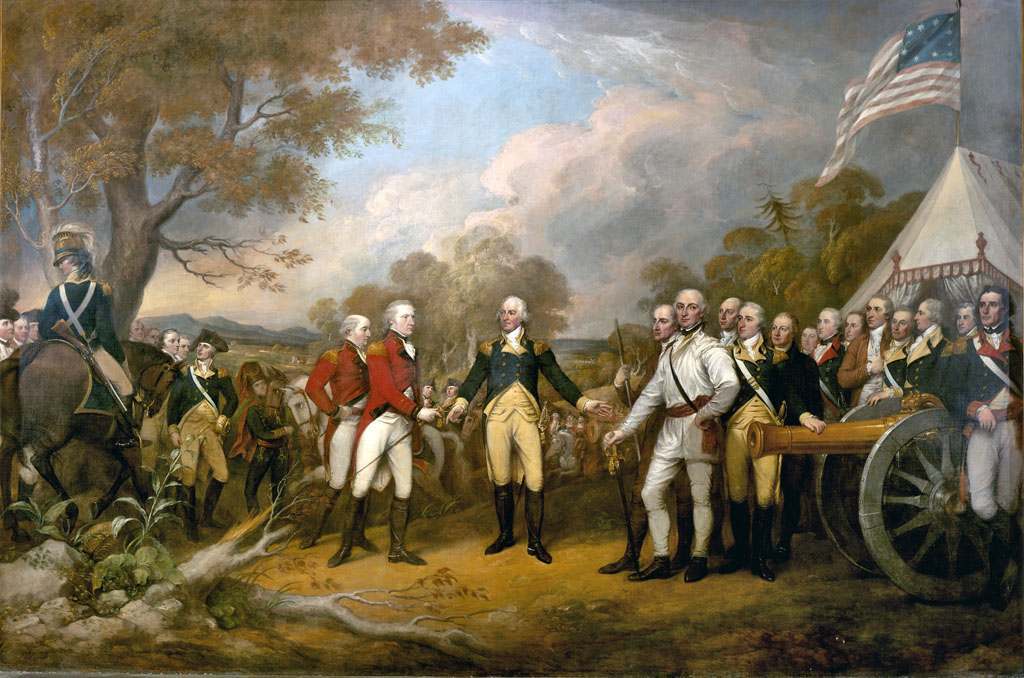On This Day in History
December 4, 1777
News of the Victory at Saratoga reaches Paris
 General John Burgoyne
General John BurgoyneOn this day in history, December 4, 1777, news of the victory at Saratoga reaches Paris, paving the way for French involvement in the American Revolution. Earlier in 1777, British General John Burgoyne had embarked on a strategy to split the American colonies in two by invading from Canada. The plan was to capture Lake Champlain, Lake George and nearby American forts, including Ticonderoga, Stanwix and Anne and to arrive at Albany, where he would meet up with General William Howe's forces, who would move up the Hudson River Valley from New York City. British control of the Hudson Valley up through Lake Champlain would effectively cut off New England from the rest of the colonies.
The plan worked fine at first, the British forces and their Indian allies easily took Lake Champlain, Fort Crown Point and Fort Ticonderoga, but then, the American resistance began to mount effective resistance in various skirmishes at places such as Hubbardton, Bennington and Fort Stanwix. The American forces began to swell as Indians allied with the British began to attack civilian settlers and the fall of Ticonderoga stirred up American resolve.
General Burgoyne's strategy began to be plagued by desertion from his Indian allies, news that General Howe would take his main force to Philadelphia instead of sending them to Albany; and the loss of 1,000 men at the Battle of Bennington. Meanwhile, the American troops swelled to nearly 15,000 men as militia and Continental troops arrived from all over New England. Burgoyne had only half this number.
 Surrender of General Burgoyne by Jonathan Trumbull US Capitol Rotunda
Surrender of General Burgoyne by Jonathan Trumbull US Capitol RotundaTwo main battles, which together are generally called the Battles of Saratoga, took place. One at Freeman's Farm on September 19 and the second at Bemis Heights on October 7. Over 1,000 British soldiers were killed or captured in the battles, while the Americans lost only a third of this number. General Burgoyne was forced to draw back to Saratoga where his troops were quickly surrounded. On October 17, he surrendered his army of over 6,000 men.
While Americans celebrated and London scrambled to reassess its strategy, word of the victory arrived in Paris on December 4, 1777. Benjamin Franklin received the news from the Continental Congress and went immediately to the French government. France desperately wanted to enter the war against its archrival, Britain, but believed it should wait until the American colonists first proved they could resist or even defeat the British without outside assistance. The victory at Saratoga gave the world proof that the Americans had the tenacity and resolve to stand up to Great Britain and two days after the word arrived in Paris, King Louis XVI announced his intention to join the war on the side of the Americans. Over the next several years, France contributed large sums of money, troops, ships and supplies without which the Americans may never have won the war.
Read what happened on other days in American history at our On This Day in History section here.
This Week in History
- December 4, 1777 - News of the Victory at Saratoga reaches Paris
- December 5, 1777 - Battle of White Marsh begins
- December 6, 1776 - Margaret Morris begins journaling the war in New Jersey
- December 7, 1776 - The Marquis de Lafayette arranges to fight with the Americans
- December 8, 1758 - Margaret Kemble and Thomas Gage are married
- December 9, 1775 - American victory at the Battle of Great Bridge
- December 10, 1778 - John Jay is elected President of the Continental Congress
Like This Page?
© 2008 - 2022 Revolutionary-War-and-Beyond.com Dan & Jax Bubis










Facebook Comments